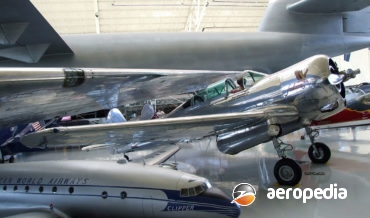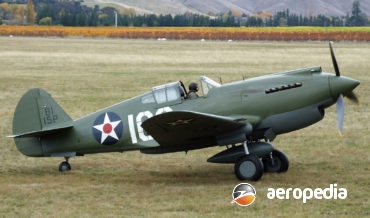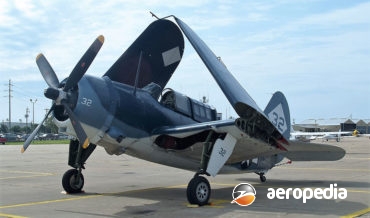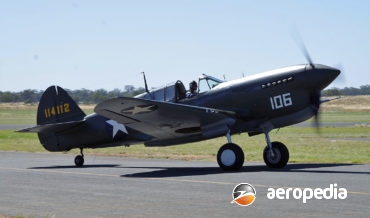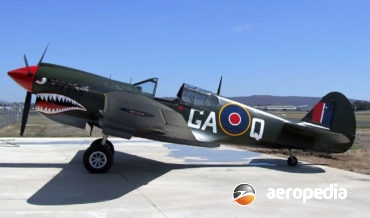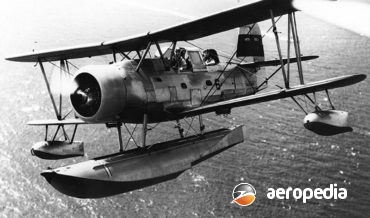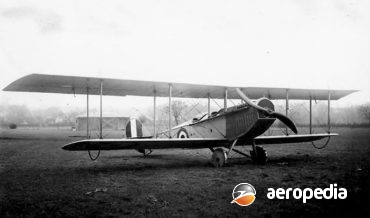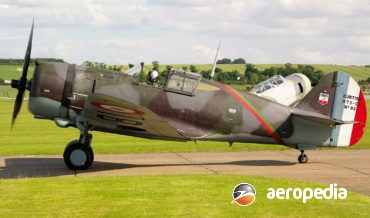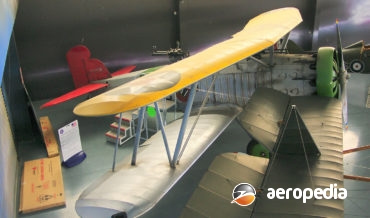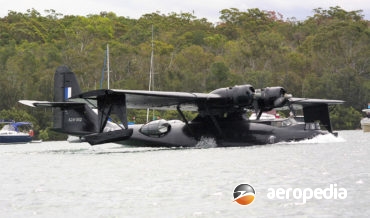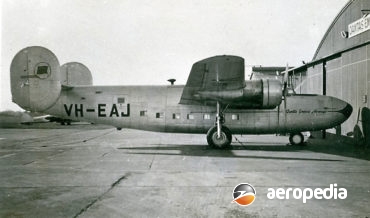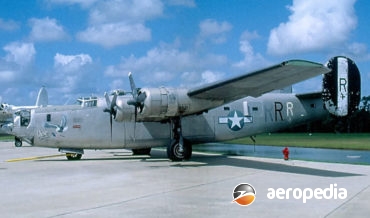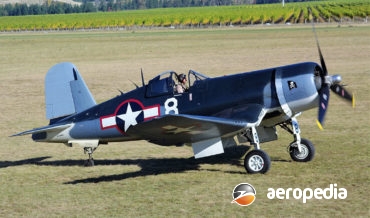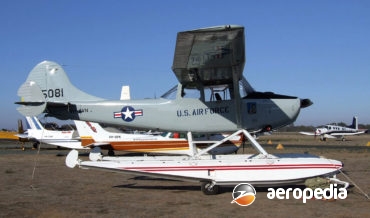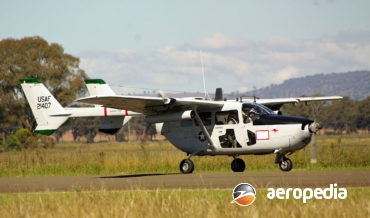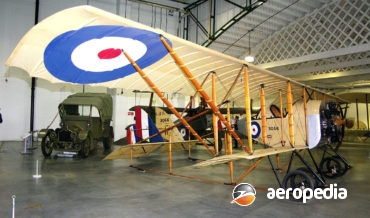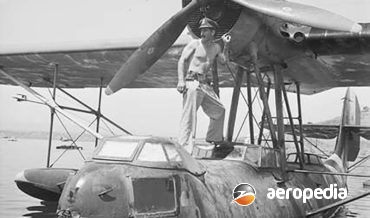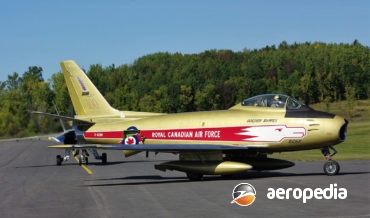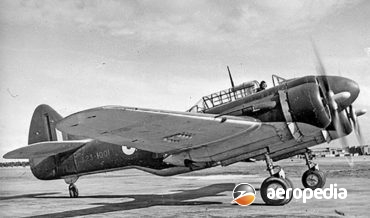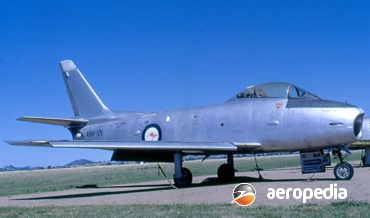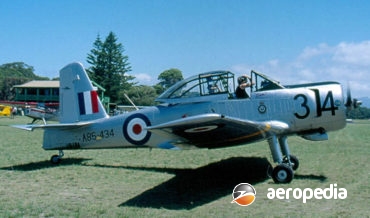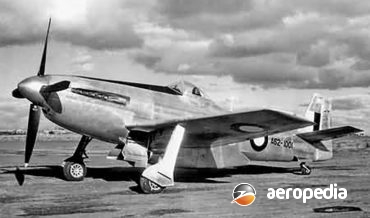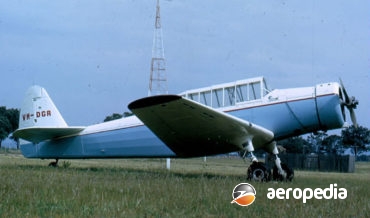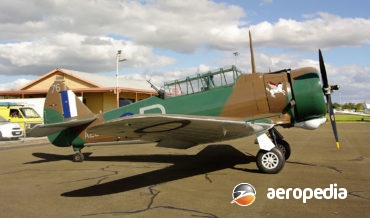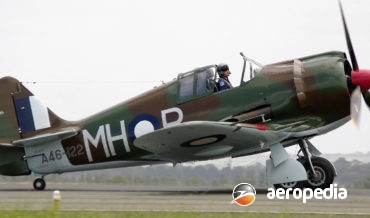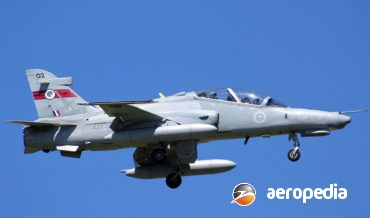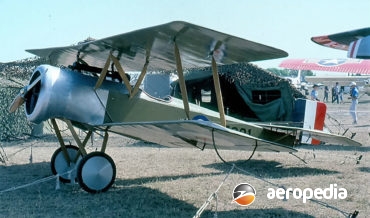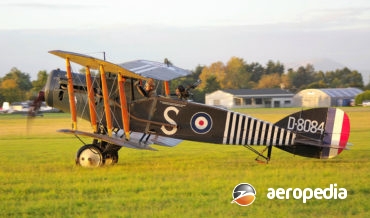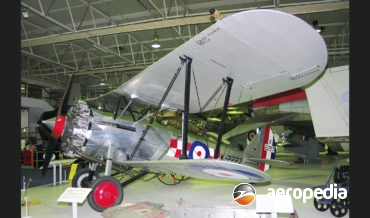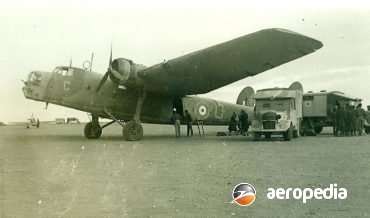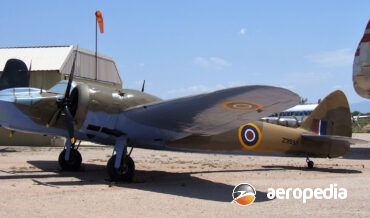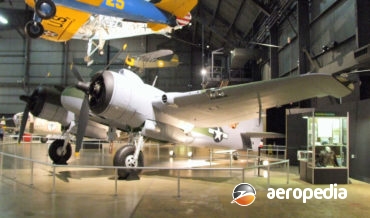All Contents
Contents
The DH.100 Vampire was built as a single-seat, jet-propelled, interceptor and the prototype (LZ548/G) was flown for the first time on 20 September 1943 powered by a de Havilland Goblin turbojet.
David C. Eyre
- May 19, 2019
The Mosquito was probably the most versatile aircraft of World War II, being used in all roles from fighter, night fighter, long-range bomber, pathfinder, to photo-reconnaissance etc.
David C. Eyre
- May 19, 2019
In 1917 the Packard Motor Company in the US commenced to produce the 298 kw (400-hp) Liberty engine and the DH.9 airframe was modified to take the new engine, becoming thew DH.9A.
David C. Eyre
- May 19, 2019
In 1916 Captain Geoffrey de Havilland designed the DH.9 for Aircraft Manufacturing Ltd as a successor to the DH-4.
David C. Eyre
- May 19, 2019
In June 1914 Geoffrey de Havilland moved from the Royal Aircraft Factory to the Aircraft Manufacturing Co Ltd (AIRCO) and commenced design of a series of reconnaissance and scout aircraft, the first becoming the Airco DH.1, followed by the DH.2. The Airco DH.5 was designed in 1916 as a
David C. Eyre
- May 19, 2019
The DH.4 was produced in prototype form by the Aircraft Manufacturing Co of Hendon in 1916, this aircraft (3696) making its first flight in mid August 1916 at Hendon, and was unusual in having dual controls.
David C. Eyre
- May 19, 2019
After working with the Royal Aircraft Factory for a period, in 1914 Geoffrey de Havilland moved to the Aircraft Manufacturing Co Ltd (AIRCO) and commenced to design aircraft
David C. Eyre
- May 19, 2019
The DH.1 was, usually known as the Airco DH.1, was designed by Geoffrey de Havilland after he became the chief designer of The Aircraft Manufacturing Co (Airco). It was similar in appearance to the RAF FE.2, which he also previously designed, and was crewed by a pilot and an
David C. Eyre
- May 19, 2019
The CW-21 series was designed and built by the Curtiss Wright Corporation at its St Louis Airplane Division in the 1930s, the first model in the series being the CW-19R, a two-seat general purpose training monoplane powered by a 336 kw (450-hp) Wright R-975-E3 Whirlwind engine.
David C. Eyre
- May 19, 2019
Following the success of the Hawk 75A, in July 1937 Curtiss installed a liquid-cooled Allison V-1710-11 engine with a General Electric turbo-supercharger in a Model 75A, becoming the Model 75I.
David C. Eyre
- May 19, 2019
n 1938 Curtiss Wright was developing a new dive bomber for the US Navy known as the SB2C (scout bomber, 2nd type, Curtiss), and it eventually became known as the Helldiver in November 1941.
David C. Eyre
- May 19, 2019
In an attempt to increase the high-altitude performance of the P-40E Kittyhawk, Curtiss undertook the redesign of the aircraft to take a British-built Rolls Royce Merlin 28 engine with a single-stage, two-speed supercharger, and this was installed in a P-40D airframe and flown for the first time as the XP-40F
David C. Eyre
- May 19, 2019
The P-40 series of fighter aircraft commenced with the XP-40 prototype and developed through the P-40C Tomahawk, which was used by the RAAF in the Middle-East campaign, and ultimately to the Kittyhawk.
David C. Eyre
- May 19, 2019
The SOC Seagull was a two-seat scout / observation aircraft designed by Alexander Solla and built for the US Navy by the Curtiss-Wright Corporation.
David C. Eyre
- May 19, 2019
Designed for one of the founders of the American aviation industry, Glenn Hammond Curtiss, the Jenny was one of the great pilot training aircraft of the World War I period.
David C. Eyre
- May 19, 2019
In 1934 Don R Berlin, chief engineer of the Curtiss Airplane Division of the Curtiss Wright Corp, designed an all metal low-wing cantilever monoplane with a retractable undercarriage.
David C. Eyre
- May 19, 2019
In the 1920s Curtiss developed a series of biplane fighters, variants of which were built as civil aircraft, including the Conqueror Mailplane, D-12 Mailplane, and the Lindbergh Special built specially for Charles Lindberg.
David C. Eyre
- May 19, 2019
The PBY Catalina was designed by Consolidated-Vultee Aircraft Corporation, which received an order from the US Navy on 28 October 1933 to build an experimental patrol aircraft designated XP3Y-1. The prototype (c/n 9459) flew for the first time on 21 March 1935 at Hampton Road, powered by two 615 kw
David C. Eyre
- May 19, 2019
The requirement for a very long-range transport quickly became apparent early in world War II and , because of its roomy fuselage and good cruising speed, the B-24 series was a logical aircraft to develop to meet this requirement.
David C. Eyre
- May 19, 2019
Although not as famous as the Boeing B-17 Fortress, the Liberator was built in substantially greater numbers and operated on more operational fronts and in a greater variety of variants (15 major) than any other allied or enemy bomber.
David C. Eyre
- May 19, 2019
Acknowledged to be the finest shipboard fighter of World War II, the Corsair was superior in many respects to the Mustang below 6,096 m (20,000 ft), and, although it was designed for shipboard operation, the type was probably operated more frequently from land bases during the war.
David C. Eyre
- May 19, 2019
In 1950 the Cessna Aircraft Company of Wichita, Kansas, won a competition for the design of a liaison and observation monoplane for the US military services with the Model 305A, a development of the commercial Model 170 with similar wings, tail unit, and landing gear.
David C. Eyre
- May 19, 2019
A military variants of the Cessna 337, the O-2 series was built in some numbers, 501 O-2As going to the USAF for Forward Air Control duties, and some 31 O-2Bs were used in the psychological warfare role in Vietnam.
David C. Eyre
- May 19, 2019
In 1913 the brothers, Gaston and Rene Caudron, who lived in the Rue area of the Somme, designed and built a single-seat sesquiplane known as the Caudron G.II. Later in 1913 Lt Chanteloup looped a Caudron over Issy aerodrome near Paris.
David C. Eyre
- May 19, 2019
In 1931 the Italian Company Cantiere Novale Triestino (CANT) was reorganised as Cantieri dell’Adriadtico (CRDA) and Filippo Zappato returned from working in France to become Chief Engineer.
David C. Eyre
- May 19, 2019
The licence-built Canadair Sabre was just one of a number of variants of the popular Sabre series.
David C. Eyre
- May 19, 2019
In June 1940 the Australian War Cabinet voted money for the development of an aeroplane for the RAAF which was capable of dive-bombing, torpedo carrying, general bombing and reconnaissance duties.
David C. Eyre
- May 19, 2019
Considered to be the best of the numerous derivatives of the North American F-86F Sabre, the CA-27 Sabre had about 60-percent of its fuselage structure changed due to the installation of a Rolls Royce Avon turbojet in place of the General Electric J-47, the Rolls Royce engine requiring a greater
David C. Eyre
- May 19, 2019
The Winjeel (an Aboriginal word meaning young eagle) was designed to meet a 1948 specification for an aircraft to replace both the de Havilland Tiger Moth and the CAC Wirraway
David C. Eyre
- May 19, 2019
The CA-15 was the second single-seat fighter designed and built in Australia for service in the Pacific Theatre of Operations, the Boomerang being the first.
David C. Eyre
- May 19, 2019
The Wackett, named after its designer, Sir Lawrence Wackett, was developed by the Commonwealth Aircraft Corporation as an intermediate step between the elementary trainer, the de Havilland DH-82 Tiger Moth, and the more advance trainer, the CAC Wirraway.
David C. Eyre
- May 19, 2019
The Wirraway (an aboriginal word meaning challenge) was a development of the North American NA-32 and NA-33 by the Commonwealth Aircraft Corporation. In January 1942, eight Wirraways engaged a force of more than 100 Japanese aircraft near Rabaul.
David C. Eyre
- May 19, 2019
The suddenness of the Japanese onslaught at the beginning of the war in the Pacific, the speed at which Japanese forces moved, and the possibility of fighter aircraft not being available from overseas sources, led to the decision to design and build a fighter aircraft as soon as possible to
David C. Eyre
- May 19, 2019
In 1971 Hawker Siddeley and British Aerospace were selected to design and build the HS.1182 trainer for the RAF, and since then more than 700 examples have been supplied to many of the Worlds airforces in a variety of models.
David C. Eyre
- May 19, 2019
The Bristol Scout was designed by Frank Barnwell, chief designer and engineer from 1915 to 1938 for the British & Colonial Aeroplane Company, being flown for the first time on 23 February 1914 by the Australia pilot, Harry Busteed.
David C. Eyre
- May 19, 2019
Known as the Brisfit, the Bristol Fighter was produced in large numbers during World War I as the F.2A and F.2B, some 5,308 examples being constructed with a variety of engines, including the Rolls Royce Falcon I, Falcon II, Falcon III, 112 kw (150-hp) Hispano Suiza, 149 kw (200-hp) Hispano
David C. Eyre
- May 19, 2019
The Bulldog was designed to specification F.9/26 by Leslie Frise as a private venture.
David C. Eyre
- May 19, 2019
The Type 130 was designed by the Bristol Aeroplane Co Ltd to meet Air Ministry specification C.26/31 as a replacement for the Vickers Valentia and to meet a requirement of the RAF for a bomber able to carry 907 kw (2,000 lb) of bombs and having a crew of four;
David C. Eyre
- May 19, 2019
The Blenheim was built in large numbers for the Royal Air Force and bore the brunt of operations in France at the beginning of the war with the British Expeditionary Force until the French capitulation.
David C. Eyre
- May 19, 2019
The Bristol Type 156 Beaufighter was conceived basically as a fighter variant of the Beaufort bomber.
David C. Eyre
- May 19, 2019
Recent Comments
Archives
Categories
- No categories
Categories
- No categories
Latest Posts
Newsletter

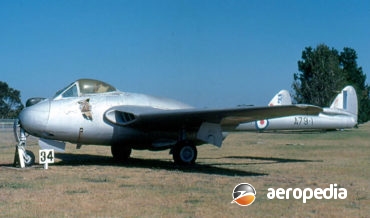
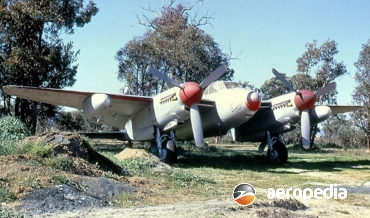
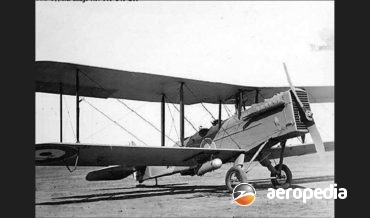
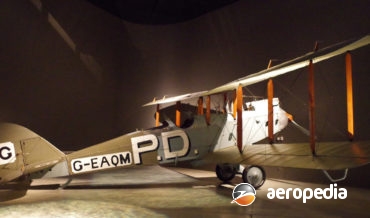
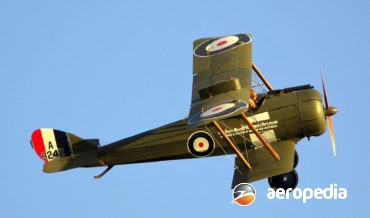
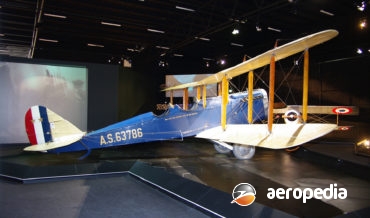
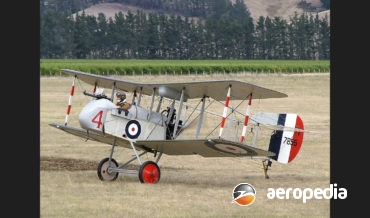
![DE HAVILLAND [AIRCO] DH.1](https://aeropedia.com.au/wp-content/uploads/2019/05/de-Havilland-Airco-DH.1-Aeropedia-The-Encyclopedia-of-Aircraft-Australia-New-Zealand-370x218.jpg?v=1593221059)
